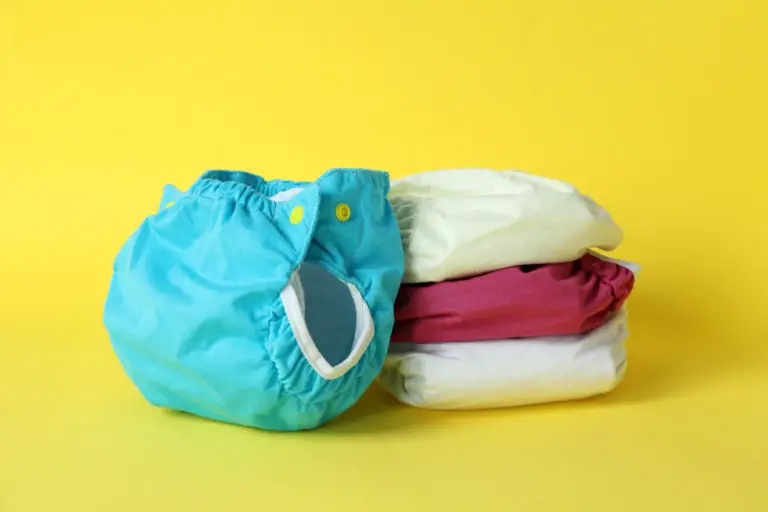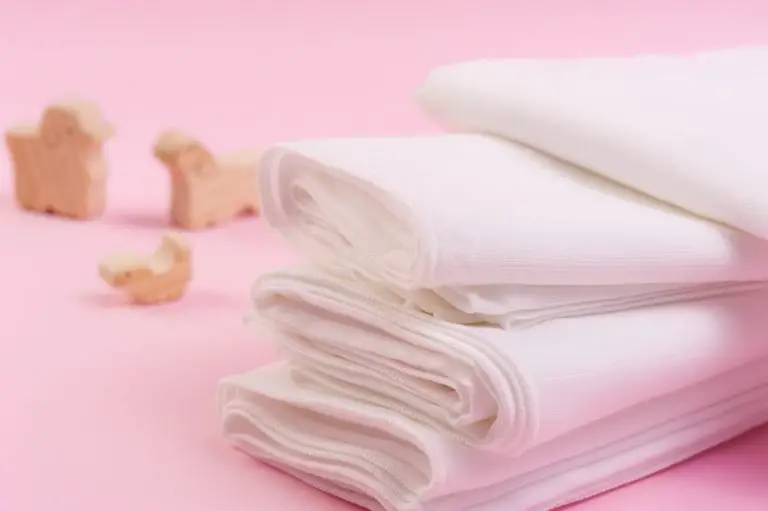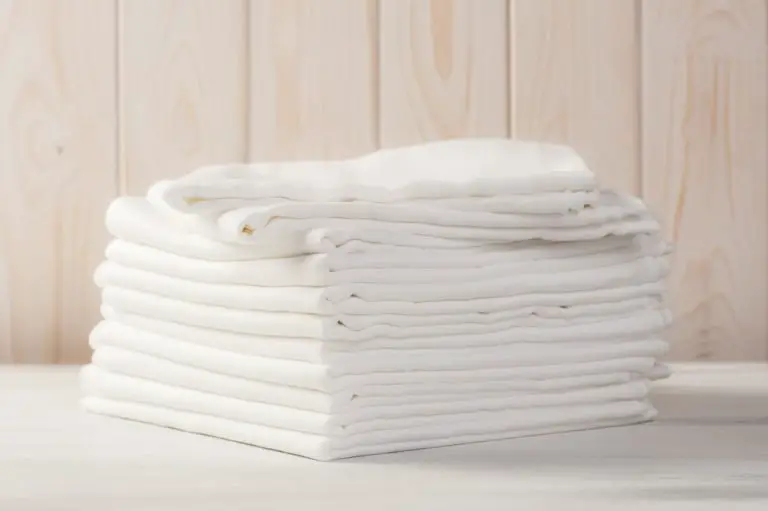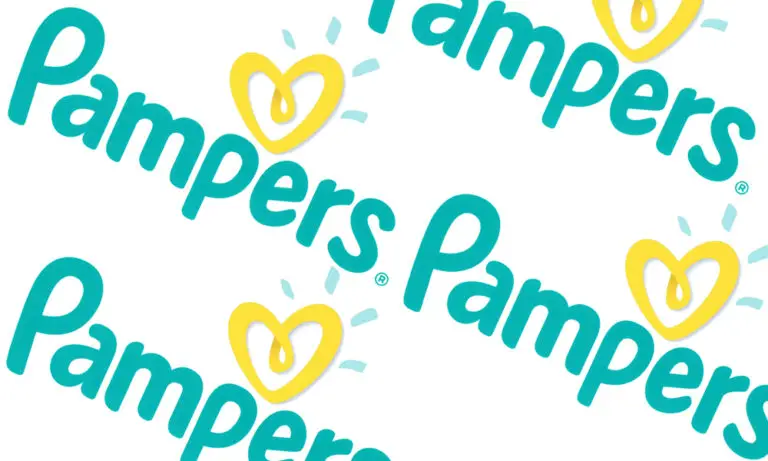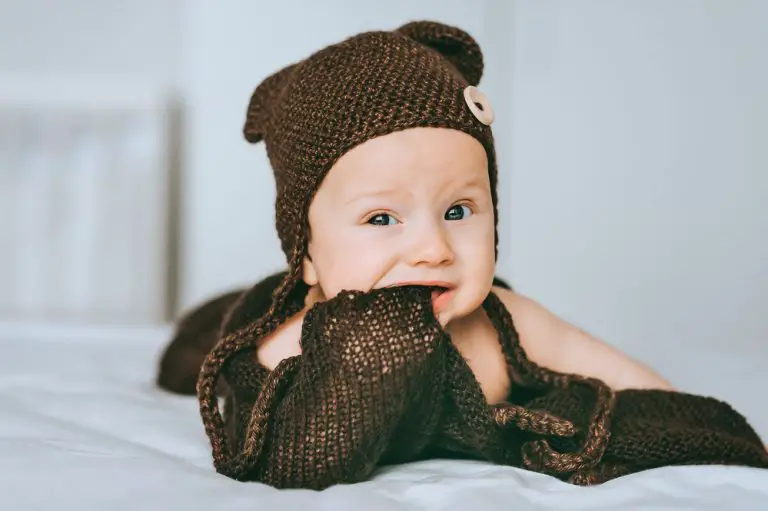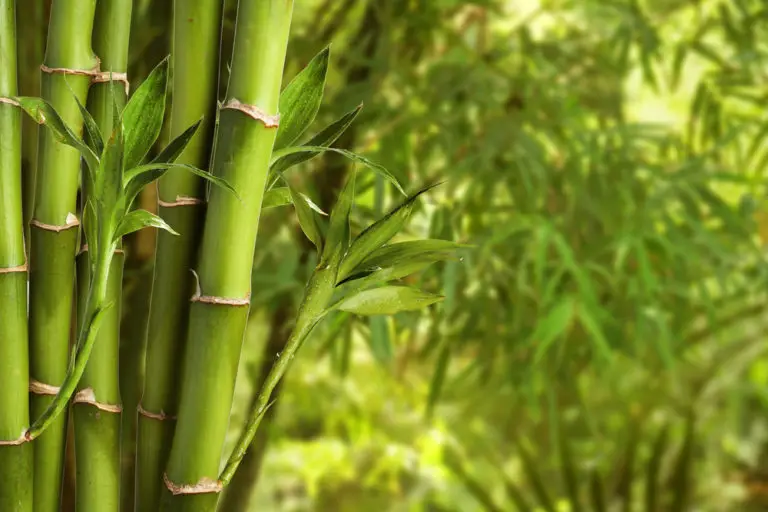Prefold Cloth Diapers: The Beginner’s Guide (2024)
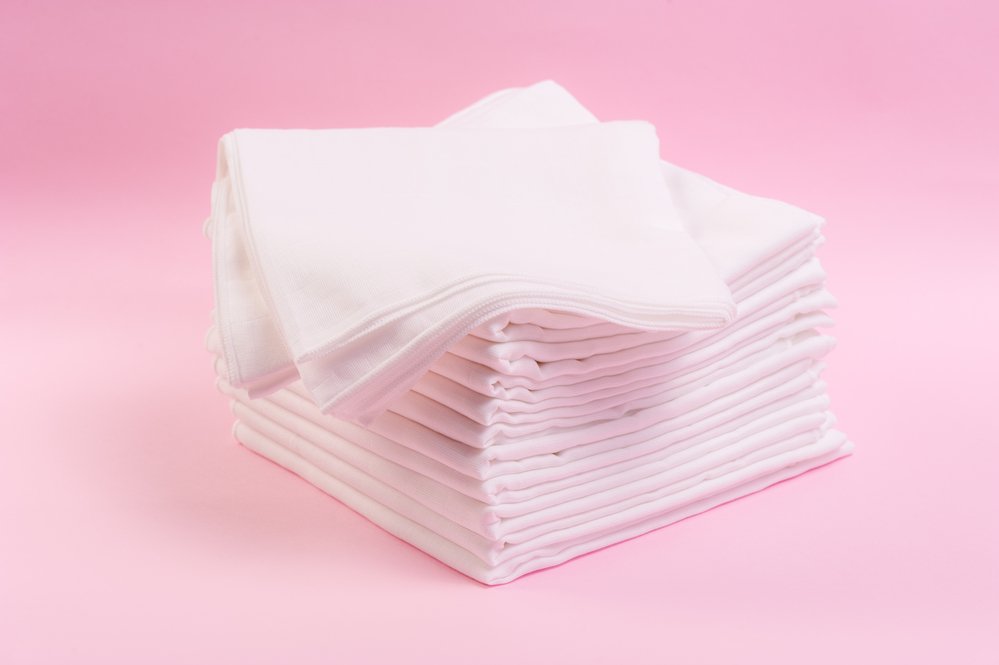
Prefold cloth diapers are a cost-effective and cozy way to cloth diaper your baby. Comparable to flats in style and design, they cut out one extra step because of the thick, padded, absorbent layer pre-sewn or folded into the diaper.
While they take a little more work to get the hang of than all-in-ones or pocket diapers, once mastered, they are an excellent choice for any cloth diapering family.
- What Are Prefold Cloth Diapers?
- Flats vs. Prefolds vs. Fitted Diapers
- For Whom are Prefold Cloth Diapers Best for?
- What Materials Are Used for Prefold Cloth Diapers?
- How Much Do Prefold Cloth Diapers Cost?
- Benefits of Prefold Cloth Diapers
- Downsides of Prefold Cloth Diapers
- How to Use Prefold Cloth Diapers?
What Are Prefold Cloth Diapers?
Prefold cloth diapers are a thick piece of 3-fold fabric that have been pre-folded or sewn to have a padded absorbent layer in the middle.
Similar to flat diapers, they require some folding and tucking around your baby’s waist to secure fit, and they will need additional fasteners or pins.
Traditionally, prefold diapers are made from cotton, but another popular option is a cotton and bamboo blend. Because prefolds do not have a stay-dry layer, a diaper cover must be worn over the top to prevent leaks.
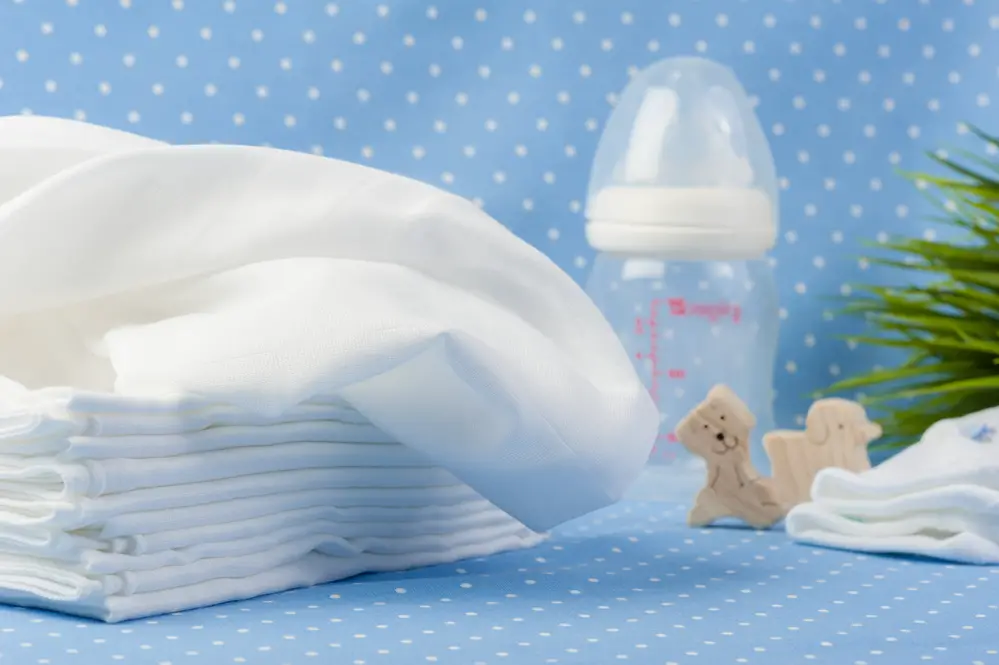
Prefolds vary in size from a newborn prefold, which will fit a baby roughly 5-10 lbs, to toddler prefolds for children 30+ pounds.
Because they are less costly than most other styles of cloth diapering, the need to buy different sizes as your child grows is not a hindrance to some. However, many children will fit in a regular size prefold for most of their diapering years.
Flats vs. Prefolds vs. Fitted Diapers
When it comes to deciding which style of cloth diaper to use, it can be confusing to decipher all the nuances.
Flats and prefolds have much in common. Both styles require pins or diaper fasteners, both types need a diaper cover, and both are usually made from cotton.
Cloth prefold diapers have the edge for some because they require less folding to create the absorbent layer in the middle. Although cost-wise, the two styles are comparable; neither will save you much money over the other.
Fitted diapers are similar to flats and prefolds because they also require a diaper cover, but they are already shaped like a traditional disposable diaper.
When comparing flats or prefolds to fitteds, consider that fitted diapers, in addition to being preshaped, typically have Velcro or snaps, which means no pins are needed.
For Whom are Prefold Cloth Diapers Best For?
Because cloth prefold diapers are inexpensive, they are a great choice for families on a budget. You can purchase a ten or twelve-pack of prefolds for roughly the same cost as one all-in-one or hybrid diaper.
Of course, they have extra expenses like covers and fasteners, but the cost still comes out significantly lower than other styles.
Since using a prefold cloth diaper takes some practice, they may better suit those with cloth diapering experience. Still, in reality, anyone can master the skill of folding if desired.
Because of the folding and fitting, they make diaper changes a little longer and more complex, so a backup option like an all-in-one might be helpful for errands and traveling.
Lastly, prefold diapers benefit from being able to go in the dryer or a low setting. This benefits those who don’t have access to outdoor drying space or are low on time.
What Materials Are Used for Prefold Cloth Diapers?
The most common style is the cotton prefold diaper. There are bleached cotton prefolds, unbleached prefolds, organic prefold diapers, and cotton blended bamboo prefolds.
- Bleached prefolds are bleached cotton, and they are bright white; think of a cotton undershirt. They are easy to clean and only require one prewash before they are ready to use.
- Unbleached prefold cotton diapers require three to five washes before use to prep them, but they are softer on your baby’s skin. The pre-washes are to rid the cotton of the natural oils already removed from bleached diapers.
- Organic prefolds are incredibly soft and require the same prep routine as unbleached diapers. The difference is the cotton is sourced organically. Therefore, organic prefolds will cost you a bit more than bleached or unbleached.
- The bamboo and cotton blended cloth prefold diapers are the softest type but also the most delicate. This style should only be put in the dryer on low, and the fabric may wear out more quickly than 100% cotton.
How Much Do Prefold Cloth Diapers Cost?
Pre-folded diapers are among the most cost-effective style. On average, it costs roughly $12-$15 for a twelve-pack of cotton diapers. Standard prefold sizing is 10×14 inches and will fit most babies between 10 and 30 lbs.
Newborn prefolds are sized 4x6x4 and will cost about $20 for a dozen unbleached or bleached cotton. Prices across manufacturers are relatively consistent. The newborn size costs slightly more because they are not as common. Additionally, they will only fit babies up to 13 lbs.
If you are expecting a bigger baby or don’t want to spend money on two sizes of diapers, consider using disposables the first few weeks or only purchasing a handful of newborn sizes. Once you know your baby’s weight, you can decide what size you need to purchase.
Bamboo prefolds are the most expensive, and they will cost about $25 for a 6-pack. This is still, however, much cheaper than all-in-ones, hybrids, or pocket diapers.
A 4-6 pack of prefold diaper covers will cost about $25. However, you will only need about three covers a day, so if you plan to do laundry every other day, it is possible to purchase prefolds and covers for under $100.
Also read: Best Prefolds for Cloth Diapers
Benefits of Prefold Cloth Diapers
Cloth diapering with prefolds is affordable, environmentally friendly, and reasonably straightforward.
Once you get the knack of prefold diaper folding, you should have no trouble utilizing this system. Purchase a life-size baby doll to practice so when your baby arrives, you’ll be confident and ready to go!
A prefold cloth diaper is simple and easy to wash and has a fairly quick dry time. Most styles of prefolds can even go in the dryer, unlike all-in-ones, pockets, and hybrids, which adds an extra layer of convenience.
Diaper covers can be worn two or three times as long as they are not soiled, wet, or smell which cuts down on laundry and costs.
There are different prefold diaper sizes to help you get the right first for your baby, and prefolds are known to leak less and cause less diaper rash.
Downsides of Prefold Cloth Diapers
Prefolds have very few downsides, but there are a few. Because prefold sizing varies, you may end up having to purchase two or three sets of diapers before your baby is potty-trained.
Overall, prefolds are inexpensive, but if cost is an issue, consider forgoing newborn prefolds and covers and opting for using standard size or disposables until your baby fits the standard size.
Learning how to fold prefolds is a deterrent for some. If you are considering this style, purchase or borrow some and practice.
Bamboo and cotton blends are delicate and may require replacement faster than 100% cotton; additionally, they should not go into the dryer, which increases dry time.
A final downside to prefolds is that if they are not fitted properly, messy poop explosions can happen; correct sizing and practice will, however, prevent most blowouts.
How to Use Prefold Cloth Diapers?
To use prefolds, you will need diaper pins or fasteners and a waterproof cover.
There are different ways to fold a diaper prefold, so look for tutorials online and practice the various folds. It may not be until your baby is here and you’ve tried different folds that you know what works best.
Once you have fastened a clean diaper around your baby, place a waterproof cover on top, and they are good to go!
You must clean poop off a prefold before placing it in the laundry bin. Cloth diapers should be washed every two to three days with an approved cloth diaper detergent.
When possible, hang them in the air to dry or dry in the sun; if air drying is not possible, most prefolds can go in the dryer or a lowe or medium setting.

Laurel Davidson
Laurel brings her passion for parenting and years of problem-solving experiences to ParentingMode. She is the editor of ParentingMode, ensuring that the content is relevant and valuable to the readers. Laurel received her master’s degree in public administration with a certificate in economic development. She is a stay-at-home mom, raising two adorable kiddos, Aurora and Thomas. Laurel enjoys sharing her experience as a parent, traveling, and good food.

